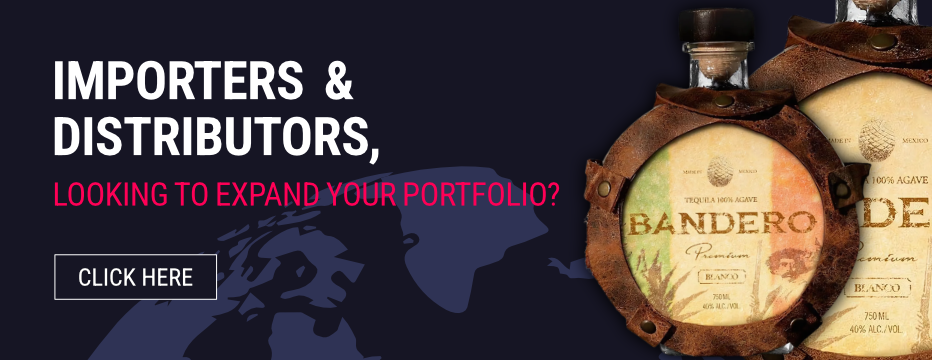Sommeliers Choice Awards 2024 Winners
10 Tips to Manage your Cash Flow for your Winery, Brewery or Distillery
Here are some great tips to optimize cash flow and develop a working budget to ensure your long-term business plan is a success

Entrepreneurial brand owners often have a distinct vision of where they see their labels in the future, however many don’t have the financial background to successfully plan for cash flow complications. With lofty revenue aspirations, many brand owners get caught up trying to squeeze cash flow against already stressed margins. Having a clear understanding of your cash flow is more than just looking at your bank balance before a purchase. Profitable business plans come from proper planning and due diligence.
Optimizing cash flow is about constantly reviewing operations, updating your books, properly structuring payables and receivables, and defining what you can and cannot achieve with the resources available. Here are the 10 tips on optimizing cash flow and developing a working budget to ensure your long-term business plan is a success.
1. Understand your Ins and Outs
First and Foremost, always have a solid overview of what your budget looks like. Whether you are getting ready to expand or just starting out, be prepared for predictable internal and external costs. Employees, bottling lines, tanks, warehousing, third party suppliers, loan payments – these are just a few of your up-front payables that you’ll need to be able to cover monthly, so devise a budget that reflects your current balances against upcoming payables and receivables.
Figuring out what your biggest expenses are and trying to minimize costs is a good first step. Negotiate terms with your suppliers to reduce your cost of goods. Review commission rates paid distributor and retailer reps to see if there are alternate ways to make the relationship more efficient. Evaluate the benefits of out-sourcing some of your marketing, media or PR tasks compared to putting in the extra effort to complete them in-house.
2. Accounts Payable
Understanding how to tackle cash flow means taking on the challenges of every payable as soon as possible. In order to properly manage your accounts payable you and your employees should:
- Develop a complete spreadsheet that covers all necessary inputs. Consider using pro tools like QuickBooks;
- Business expenses should be filed within a day of when they are expensed (this includes credit card purchases like business lunches);
- Retain and file all receipts for paper transactions;
- File incoming bills the day they arrive;
- Put aside one hour a week to review and pay all expenses.
3. Segmentation Helps
Clearly grouping your accounts into suppliers, customers and inventory is a good way to get a better understanding of your budget. The clearer you can segment your business costs, the more detailed information you will be able to ascertain. Consider using rolling 12 month forecasts with week to week reports so that you can develop an intimate understanding of your annual cash flow.
Your inventory segment should cover everything from sales volatility due to seasonal market conditions to warehousing costs and should be actively reviewed and assessed. As hard as it might be, sometimes it is beneficial to cut non-performing SKU’s from production and find ways to sell of remaining inventory in discount channels.
The Supplier Segment should define regular and one-time suppliers and their costs. By having a clear understanding of the extent of each relationship it will be easier to see who you can rely on during hard times to deliver the supplies necessary at reasonable terms.
Segmenting your customers is a good way to get a clear picture of where your money is coming from. Sometimes your biggest account holders aren’t necessarily your best friends and can actually be a drain on your cash flow issues because they have a stronghold on your inventory and are late payers. It’s important to understand each relationship and see the pros and cons of doing business with each.
4. Watch Capital Expenditures
No matter how closely you think you watch this category it always seems to hide surprises. Keep your eyes peeled for any costs due to depreciating assets. Capital expenditures are almost always reported independently of your income statements and are often taken on independently, so make sure you integrate your budget and income statements accordingly. You don’t want to be caught at the end of the year looking down the barrel of a huge expenditure list that you haven’t accounted for.
5. Evaluate your Cash Flow
Figure out when your peak and trough cash flow months are because no matter the industry or the experience of the professional, these periods are always a mental battle. When you are at a peak (usually during the first quarter right after the October, November, December push) you’ll see your business booming and might make big purchase decisions without considering the long term ramifications. In reality, even though your balances look high, most of that cash will be needed to float operations through the doldrums leading up and trailing away from any boosts during summer sales.
Gain a better understanding of your payment terms. Your payables versus receivables is an important relationship that you’ll need to have an intimate understanding of. If the majority of your suppliers are asking for payment in 30 days and your biggest account holders are paying you in 60 then you are going to be constantly running into cash flow problems. This is never ideal situation and you’ll need to talk to either your customers or you suppliers to see what can be done. Even if you can find ways to patch the problem in the short term by using credit cards or bank loans you’ll never truly fix the problem without addressing the underlying problem.
Most problems aren’t as drastic as a continual 30 day period that needs to be floated, however they’re always seems to be a gap that pops up somewhere. The best way to minimize these issues is by drafting a calendar that clearly outlines all payables and receivables so you can identify any upcoming shortfalls. Continually reach out to your accounts and communicate your needs so that everybody in the supply chain understands where you are.
6. On Time Payments
So long as you have a good payables versus receivables schedule in place, developing a strong collection system is the best step towards reducing cash flow problems. The best way to do this is to constantly review your schedule and reach out to accounts in a timely and orderly fashion to ensure they are set to pay you on time.
Keep in mind that this should also apply to you. Don’t let your late payments hurt you by disqualifying yourself for discounts or developing a relationship for a hard account to do business with.
7. Plan for the Unforeseeable
The majority of cash flow problems arise from unfavorable situations like unpaid invoices. As the business owner, it’s up to you to know how to handle these types of situations. One way to do this is to establish a long standing relationships so that your suppliers will be comfortable with flexible pay dates that you can fit into your budget.
Always reach out to your customers at least two weeks before their scheduled payments to make sure that there are no foreseeable complications. As you make your calls, take the time to develop relationships with the other team so you feel comfortable communicating your ups and downs with them in the future. If any complications come up, immediately reach out to any accounts payable that might be affected and relate the information to them to see if they can come up with a solution or swallow a late payment.
8. Reach New Customers
It’s always good practice to be seeking out new lines of revenue, so determine how you can easily grow your customer base. Online retail has been steadily growing as consumers are becoming more comfortable with the idea. Consider re-vamping your online efforts through in-bound marketing and special DTC deals offered through your winery, distillery or brewery’s website.
9. Evaluate Taxes
Structuring your business to succeed means understanding the best tax strategy for your company. There are countless ways to write off expenses and optimize taxes. If you aren’t well versed in corporate taxes consider hiring on a professional accountant.
If you are allowing employees to use company accounts, you’ll want to protect yourself against fraud and embezzlement. Put checks and balances into place like individual company credit cards or using seniors for check authorization to make sure you know where your money is going.
10. Prioritize Cash Flow
Be sure to let everybody in the company know that the main goal is to concentrate on cash flow. By setting department targets and giving out detailed tasks and bonuses you can create a good work place environment that understand the importance of cash flow. Developing cash-flow mentality in every employee is seldom done enough as some business owners think that it breeds a ‘corporate’ mentality into their winery, brewery or distillery.
The best way to avoid this feeling is to simply set realistic goals and give your employees the recognition they deserve. Thier dedication to the company's cash flow philosophy will also translate to happier employees ready to come to work and make the best of every day.














